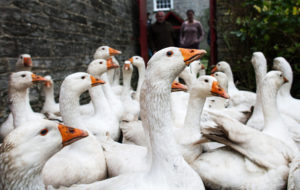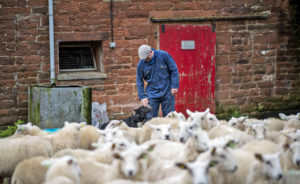The champagne corks must be popping pretty much continually at Beaver Trust HQ. Having been reintroduced to these isles in 2008, there are now about 2,000 Castor fiber out and about in Great Britain, swimming and munching trees from Cornwall to Scotland. Last year, two pairs were even released in London, the first introduction of the animal into a British urban area. Meanwhile, the Government has granted beavers protected species status, classifying them as “native”. All of this has been greeted with positive, if platitudinous, press.
After all, who doesn’t love beavers? As well as providing a furry flood-defence, beavers are lauded as “ecosystem engineers” for their stimulation of biodiversity. Their fans range from Michael Gove — who, as Environment Secretary, splurged £20,000 on a trial to reintroduce the rodents to the River Otter — to the residents of Pickering, in Yorkshire, whose homes were saved from flooding by an upstream beaver dam slowing excess water. Reassuringly, the Rewilding Britain charity informs us: “Beavers are vegan and don’t eat fish or other animals.”
That is the final straw. Beavermania needs a cold shower of reality. The “rewilding superstar” is herbivorous; veganism is a human philosophical choice. And reintroducing them comes with negatives, for the environment and for people. Indeed, their reintroduction is proof of the fallacy of “rewilding” as a conservation concept. A very expensive fallacy. Michael Gove’s £20,000 is but a drop in the river when it comes to the cost of beaver reintroduction. The Scottish Beaver Trial of 2009-14, which tested the waters for their reintroduction north of the border, cost £2 million in admin alone: a sum that is the stuff of dreams for most conservation charities. And then there is the infrastructure. The standard model of beaver re-introduction is to initially fence the “wild” animals in enclosures of about two hectares. Since beavers both burrow and climb, the fencing has to be heavy duty stuff: installation, per beaver introduction, easily costs £30,000.
Beavers also gnaw trees. An adult beaver can bring down a 10-inch-wide tree in under an hour; single beavers have been known to fell 200 trees a year. We are normally, if you remember, urged to plant trees, for the sake of the environment. But trees also have financial worth: in the upper Danube region of Germany, beavers have caused £5 million of damage. Alas, beavers are indiscriminate lumberjacks, so valuable timber requires guards, or deterrent slime. These things, too, cost money.
Beavers chop down the trees, of course, in order to build dams. And as any child who has ever played in a ditch or stream will explain, impede flowing water and you get flooding behind the impediment. When a dam built by humans floods a village, we protest. But when a beavers’ dam causes flooding, we call it a biodiverse wetland paradise. Yet it is no less destructive, of both infrastructure and agricultural land. The evidence for this can be found anywhere beavers have been reintroduced. The Scottish Beaver Trial at Knapdale paid out £38,000 to cover flood damage caused by a single colony of beavers to a mere 200 metres of road. To compensate farmers for loss of crops on flooded farmland, plus the beavers’ hearty liking for farmed veg, the German state of Bavaria coughs up €450,000 annually, while the Polish government paid out over €4 million in 2017 alone. As well as building their dams, beavers burrow into riverbanks, for up to 100 metres, destabilising them. The Polish Interior Ministry partly blamed the devastating floods of 2010 on the country’s then 70,000 beavers, stating: “The greatest enemy of the flood defences is an animal called the beaver.”
Unsurprisingly, “initial societal enthusiasm” for beaver reintroductions in Poland, which commenced in 1975, is washing away, to be replaced with “pointing out the problems connected with the phenomenon”. Here is a lesson for the UK: the more beavers we have, the more potential there is for human-beaver conflict. Both Defra and the Scottish government already operate “beaver mitigation schemes”; the latter’s, after acknowledging that “not all beaver activity is helpful in every situation”, offers to, among other things, “provide free expert advice on how to manage beaver activity” and “trial new technology to track beaver activity to minimise the burden on land managers”. The dream and the goal of rewilding, according to Rewilding Britain, is “restoring ecosystems to the point where nature can take care of itself”, yet beavers in Scotland, fantastically, actually require state management. So much for “rewilding”.
And when the management fails, the beavers are relocated or killed. In Scotland, support for the species’s expansion is already declining: in 2021, 90 beavers were culled, and 120 captured, to prevent serious damage to agriculture. Those who advocate uncontrolled beaver reintroduction are as culpable of the killings as the person pulling the trigger: it is well-known that wherever you have large beaver populations, and anything more than a negligible human population, the former end up being culled. The beaver population of Poland is 3.2 per 10 km2; in 2019, permits were issued for the reduction of about 6% of that population, a sum of 8,391 beavers. Beaver culling and relocating in Scotland, the area with the lowest human population density, has already reached over 10%. If rewilding can’t happen in Scotland, it can’t happen anywhere in the UK.
But maybe beavers are worth all this inconvenience, and all the millions? Maybe their heralded “natural flood-prevention” and ecosystem engineering is a win, for the public purse and the environment? On the possibility of beavers being major mitigators of flooding in Britain, the mathematicians of Leeds University are barely unable to contain their mirth:
“even a 10% flood reduction of the FEV [Flood Excess Volume] using beaver colonies and beaver dams, requires hundreds of such colonies per river catchment… serious flood mitigation by massive introduction of beaver colonies is completely unrealistic, in stark contrast to statements made in scientific literature and in the media.”
To this observation, one must add another: when beavers build dams on streams, they effectively replace one habitat — that of fast moving water — with another, that of ponds and wetland. Arguments rage as to whether this beaver eco-engineering is good or bad for other species. As Beavermaniacs frequently remind us, the wetlands created by the dams of Castor fiber are favourable to creatures ranging from frog to kingfisher. But conservationists concerned about our dwindling, fragile numbers of wild trout and salmon — now at their lowest levels since records began and “reaching crisis point” — have gnawing fears about beaver dams, which are barriers to piscatorial migration.
Each side, almost daily, advances a scientific report proving their case. The only safe conclusion is that of The Earth Science Review: “Effective management of beaver impacts on fish may simply come down to careful consideration of individual dam and site characteristics… and the characteristics of the fish species being considered.” In plain English: “It depends on the stream, on the dam.” Since beavers cannot be relied upon to determine whether their settlement on a stream is good or bad for the neighbourhood fish, humans will have to. Again: so much for rewilding.
Besides, whether we have beavers and whether we have wetlands are separate questions. There exists an animal even better at dam-making than Castor fiber. It is called Homo sapiens sapiens. Consider the branch of low-cost conservation called “beaver dam mimicry”, whereby dams are built out of rocks or posts. Last time I did it, it was a morning’s work with a digger. Want to emulate the beavers’ tree-felling? Use a chainsaw. You don’t need beavers to create wetland, or a tree-felled riverbank. You need a couple of hundred quid’s worth of kit. Also, human-constructed dams can be fabricated with built-in access for migratory fish, so the salmon win too. Faux-beaver dams, now commonplace in the US, show “promise in achieving a range of conservation goals, including increasing the retention of water and sediment, helping maintain late season flows, and improving stream and streamside habitat quality”. So, the benefits of beaver without the negatives of beaver.
In a de-natured countryside, it is pertinent to ask whether the greater good of the environment is really served by channelling so much conservation money into one species. Plenty of fauna and flora are extinct or locally extinct — including the hare, the corncrake, the ghost orchid. Any of them might appreciate some of the cash thrown at Castor fiber. Rabbit, like beavers, are “eco-system engineers”. Their numbers decreased 83% in Scotland between 1996 and 2018. Where is the fuss on their behalf? Is it lacking because bunnies don’t satisfy the rewilders’ romantic fantasies of the return of the wildwood?
Yes, beavers are engaging ambassadors for nature — no small matter — and yes, they have value as tourist attractions. But only for now, while their numbers are limited. When our countryside and towns heave with beavers, they will lose their appeal. When they cause the environment more problems than they solve, we will regret idealising them. It’s time to press pause on beaver reintroduction. Before they become a damn costly pest.
Disclaimer
Some of the posts we share are controversial and we do not necessarily agree with them in the whole extend. Sometimes we agree with the content or part of it but we do not agree with the narration or language. Nevertheless we find them somehow interesting, valuable and/or informative or we share them, because we strongly believe in freedom of speech, free press and journalism. We strongly encourage you to have a critical approach to all the content, do your own research and analysis to build your own opinion.
We would be glad to have your feedback.
Source: UnHerd Read the original article here: https://unherd.com/



